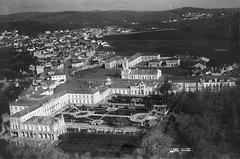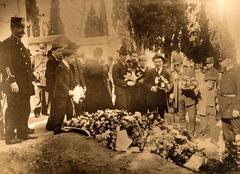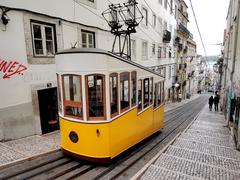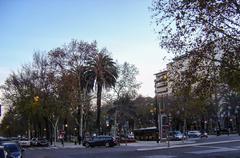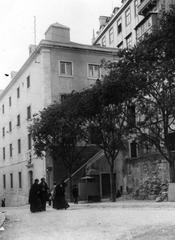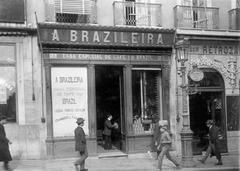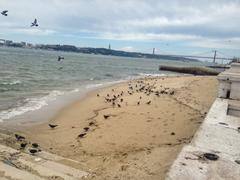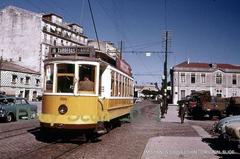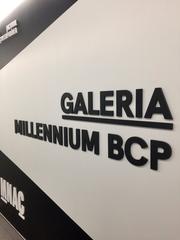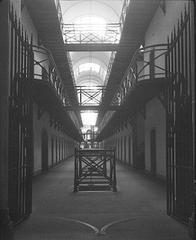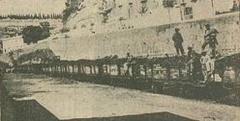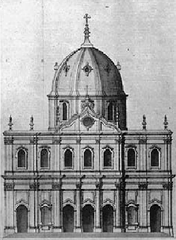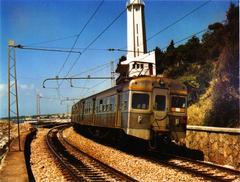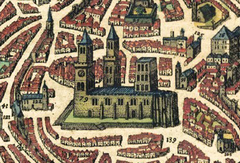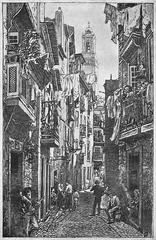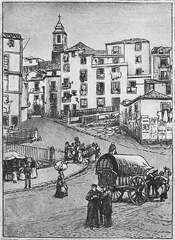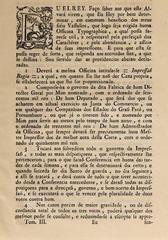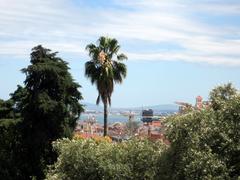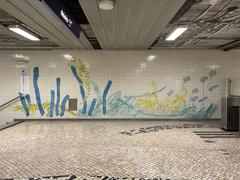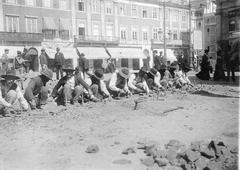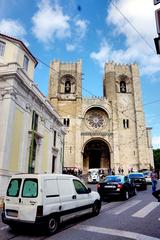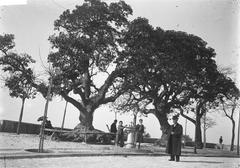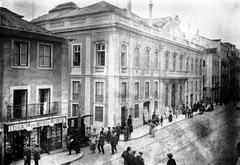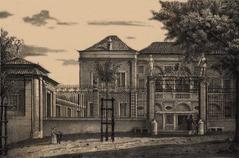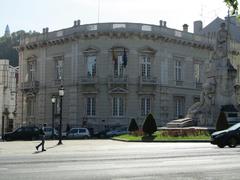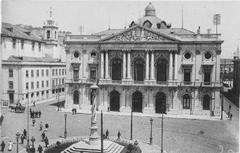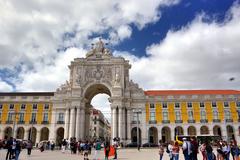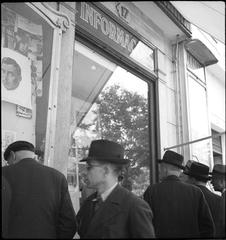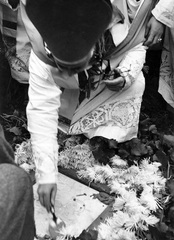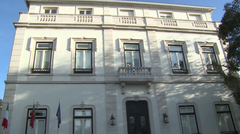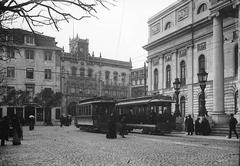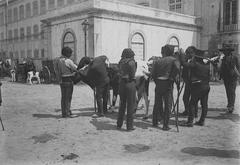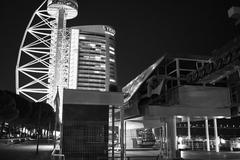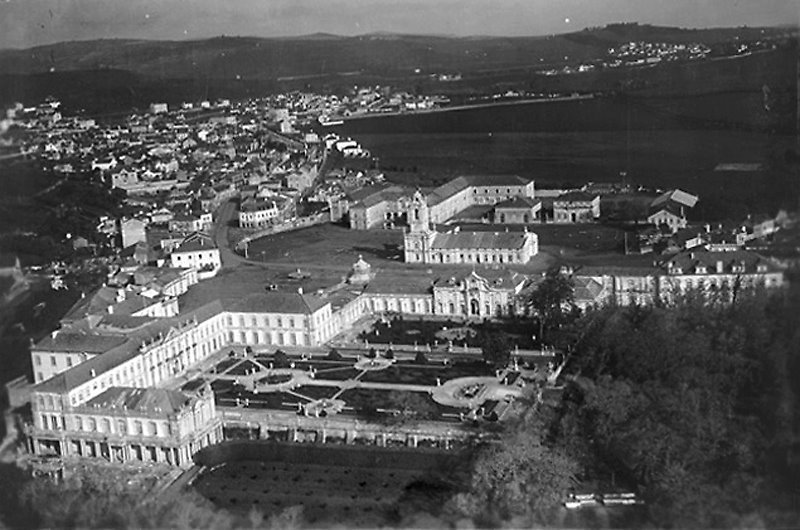
Visiting Hours, Tickets, and Travel Tips for Palácio Nacional de Queluz
Date: 17/07/2024
Introduction
The Palácio Nacional de Queluz is a stunning example of 18th-century Portuguese architecture and history, situated in the charming town of Queluz, just a short drive from Lisbon. Often referred to as the ‘Portuguese Versailles,’ Queluz Palace is an essential destination for history enthusiasts, architecture aficionados, and garden lovers. This grand palace, with its rich historical background, intricate Rococo designs, and lavish gardens, offers a captivating glimpse into the opulent lifestyle of Portuguese royalty. From its origins as a modest hunting lodge to its transformation into a royal summer residence, the palace has been a silent witness to significant historical events and artistic evolution (Palácio Nacional de Queluz - History, Tickets, Visiting Hours & Tips). This comprehensive guide aims to provide you with all the necessary information for a memorable visit, including ticket prices, visiting hours, travel tips, and highlights of the palace’s interior and gardens.
Table of Contents
- Introduction
- From Hunting Lodge to Royal Residence - Tracing the Palace’s Origins
- Embracing the Rococo - A Celebration of Elegance and Ornateness
- The Hand of a Master - Jean-Baptiste Robillon and the French Influence
- A Royal Playground - Gardens, Fountains, and the Allure of Versailles
- Beyond the Facade - Delving into the Palace’s Interior
- Visitor Information
- Travel Tips and Nearby Attractions
- A Legacy Preserved - Queluz’s Journey Through Time
- A Window into the Past - Visiting Queluz Today
- FAQ
- Conclusion
From Hunting Lodge to Royal Residence - Tracing the Palace’s Origins
The story of Queluz begins with a modest hunting lodge. In 1654, King João IV bestowed the lands of Queluz upon his son, the future King Pedro II. What began as a simple retreat for the royal family soon transformed into a symbol of power and prestige.
When Pedro II ascended the throne, he commissioned the expansion of the hunting lodge into a summer palace. This marked the beginning of Queluz’s transformation into the opulent masterpiece we see today. The initial phase of construction, spanning from 1747 to 1755, was entrusted to Mateus Vicente de Oliveira, a prominent Portuguese architect.
Embracing the Rococo - A Celebration of Elegance and Ornateness
The architectural style chosen for Queluz was Rococo, a style that swept through Europe in the 18th century. Known for its emphasis on elaborate ornamentation, asymmetry, and playful themes, Rococo found a perfect canvas in Queluz. The palace became a showcase for intricate carvings, delicate stuccowork, and vibrant colors, reflecting the exuberance of the era.
The Hand of a Master - Jean-Baptiste Robillon and the French Influence
In 1758, the reins of the palace’s design were passed to Jean-Baptiste Robillon, a French architect renowned for his mastery of Rococo and neoclassical styles. Robillon’s influence is particularly evident in the palace’s gardens, considered one of the finest examples of Portuguese Baroque landscaping. He introduced elements of French garden design, characterized by geometric patterns, symmetrical layouts, and elaborate water features.
A Royal Playground - Gardens, Fountains, and the Allure of Versailles
The gardens of Queluz are more than just a backdrop to the palace; they are an integral part of its charm. Inspired by the grandeur of Versailles, the gardens are a symphony of meticulously manicured hedges, cascading fountains, and whimsical statues.
One of the most captivating features is the Canal Grande, a long, rectangular canal adorned with statues of mythological figures. This waterway served as a stage for festive boat rides and aquatic displays, entertaining the royal court and their guests.
Beyond the Facade - Delving into the Palace’s Interior
Stepping inside the Palácio Nacional de Queluz is akin to entering a time capsule. Each room offers a glimpse into the lives and tastes of Portuguese royalty.
-
The Throne Room: This grand hall, with its gilded moldings, crystal chandeliers, and crimson velvet drapes, speaks volumes about the power and opulence of the monarchy. It was here that important ceremonies and state receptions were held.
-
The Music Room: A testament to the royal family’s love for the arts, this room is renowned for its exceptional acoustics. It was here that renowned musicians, including the legendary Domenico Scarlatti, entertained the court with their melodies.
-
The Don Quixote Room: This whimsical room, adorned with scenes from Cervantes’s masterpiece, reflects the playful side of Rococo art. The intricate murals, depicting the adventures of the eccentric knight, add a touch of literary charm to the palace.
Visitor Information
Visiting Hours
The Palácio Nacional de Queluz is open daily from 9:00 AM to 6:00 PM, with the last admission at 5:00 PM. Note that hours may vary on holidays, so it’s advisable to check the official website before planning your visit (Palácio Nacional de Queluz - Visiting Hours).
Ticket Prices
- Adults: €10
- Seniors (65+): €8
- Youth (6-17): €5
- Children under 6: Free
Tickets can be purchased online or at the entrance, but it’s recommended to buy in advance to avoid long queues (Palácio Nacional de Queluz - Tickets).
How to Get There
The palace is accessible via a short train ride from Lisbon. Take the Sintra Line from Rossio Station to Queluz-Belas Station, followed by a 15-minute walk to the palace.
Travel Tips and Nearby Attractions
Best Time to Visit
Spring and autumn offer the best weather for exploring the gardens without the summer crowds.
Nearby Attractions
Combine your visit with a trip to the stunning town of Sintra, home to the Palácio Nacional de Sintra and the mystical Quinta da Regaleira.
Accessibility
The palace and gardens have limited accessibility for wheelchair users. Check the official website for detailed accessibility information.
A Legacy Preserved - Queluz’s Journey Through Time
The Palácio Nacional de Queluz has witnessed its share of historical upheavals. From royal weddings and births to invasions and earthquakes, the palace has stood the test of time, albeit with some scars. The 1755 Lisbon earthquake, one of the most devastating earthquakes in history, caused significant damage to the palace. However, it was subsequently restored, reflecting the resilience of both the structure and the spirit of the Portuguese people.
A Window into the Past - Visiting Queluz Today
Today, the Palácio Nacional de Queluz is a national monument and a UNESCO World Heritage Site. It serves as a museum, offering visitors a captivating glimpse into the splendor and grandeur of 18th-century Portuguese court life. Walking through its ornate halls and strolling through its enchanting gardens is an experience that transports visitors back in time, allowing them to immerse themselves in the history, artistry, and legacy of this remarkable palace.
FAQ
Q: What are the Palácio Nacional de Queluz visiting hours?
A: The palace is open daily from 9:00 AM to 6:00 PM, with the last admission at 5:00 PM.
Q: How much do tickets to the Palácio Nacional de Queluz cost?
A: Tickets are priced at €10 for adults, €8 for seniors, €5 for youth, and free for children under 6.
Q: How can I get to the Palácio Nacional de Queluz from Lisbon?
A: Take the Sintra Line from Rossio Station to Queluz-Belas Station, followed by a 15-minute walk to the palace.
Conclusion
A visit to the Palácio Nacional de Queluz is more than just a tour of a historical site; it is an immersive journey through time that offers a profound understanding of Portugal’s royal heritage and artistic achievements. The palace’s exquisite Rococo architecture, meticulously landscaped gardens, and richly decorated interiors provide a vivid portrayal of the grandeur and elegance of 18th-century Portuguese court life. Whether you are exploring the opulent Throne Room, meandering through the enchanting gardens, or marveling at the intricate stuccowork of the Music Room, every corner of Queluz Palace tells a story of splendor and cultural significance. As a UNESCO World Heritage Site, the palace not only preserves the legacy of Portugal’s past but also invites visitors to experience the beauty and history firsthand (Discover the Splendor of Palácio Nacional de Queluz). Plan your visit today and immerse yourself in the timeless allure of this magnificent monument.
References
- Palácio Nacional de Queluz - History, Tickets, Visiting Hours & Tips, 2024, Parques de Sintra source url
- Discover the Splendor of Palácio Nacional de Queluz - Visiting Hours, Tickets, and Must-See Highlights, 2024, Parques de Sintra source url
- Plan Your Visit to Palácio Nacional de Queluz - Tickets, Hours, and Visitor Tips, 2024, Parques de Sintra source url
